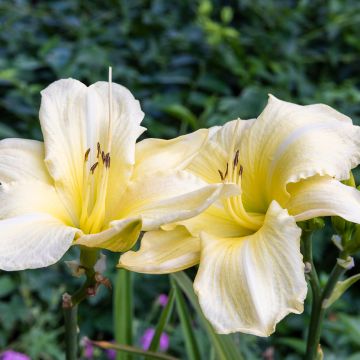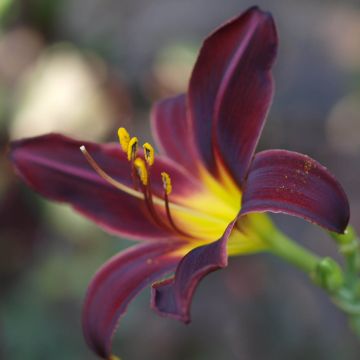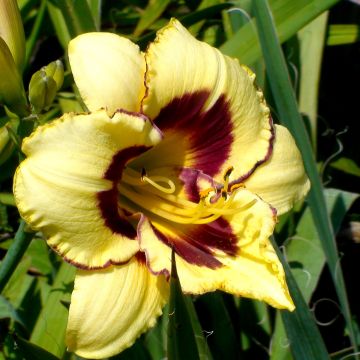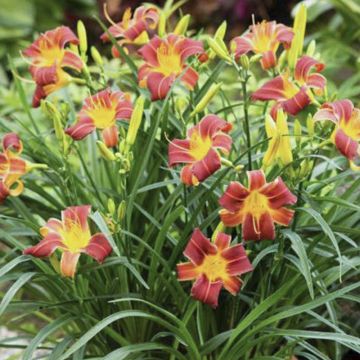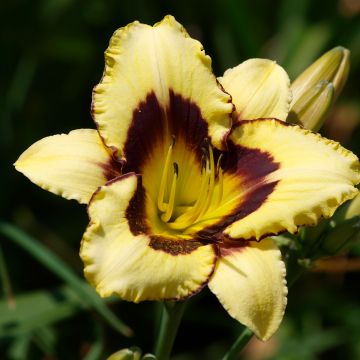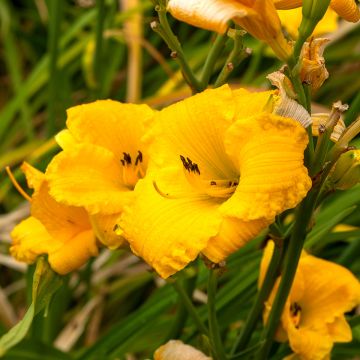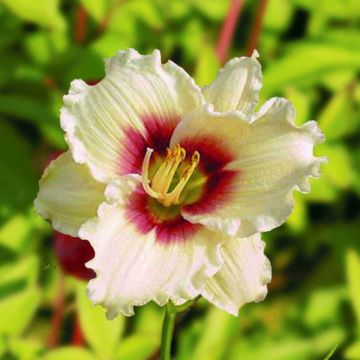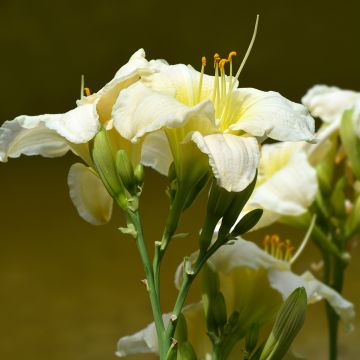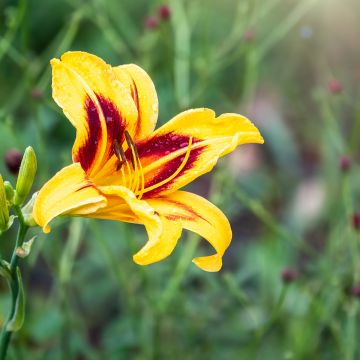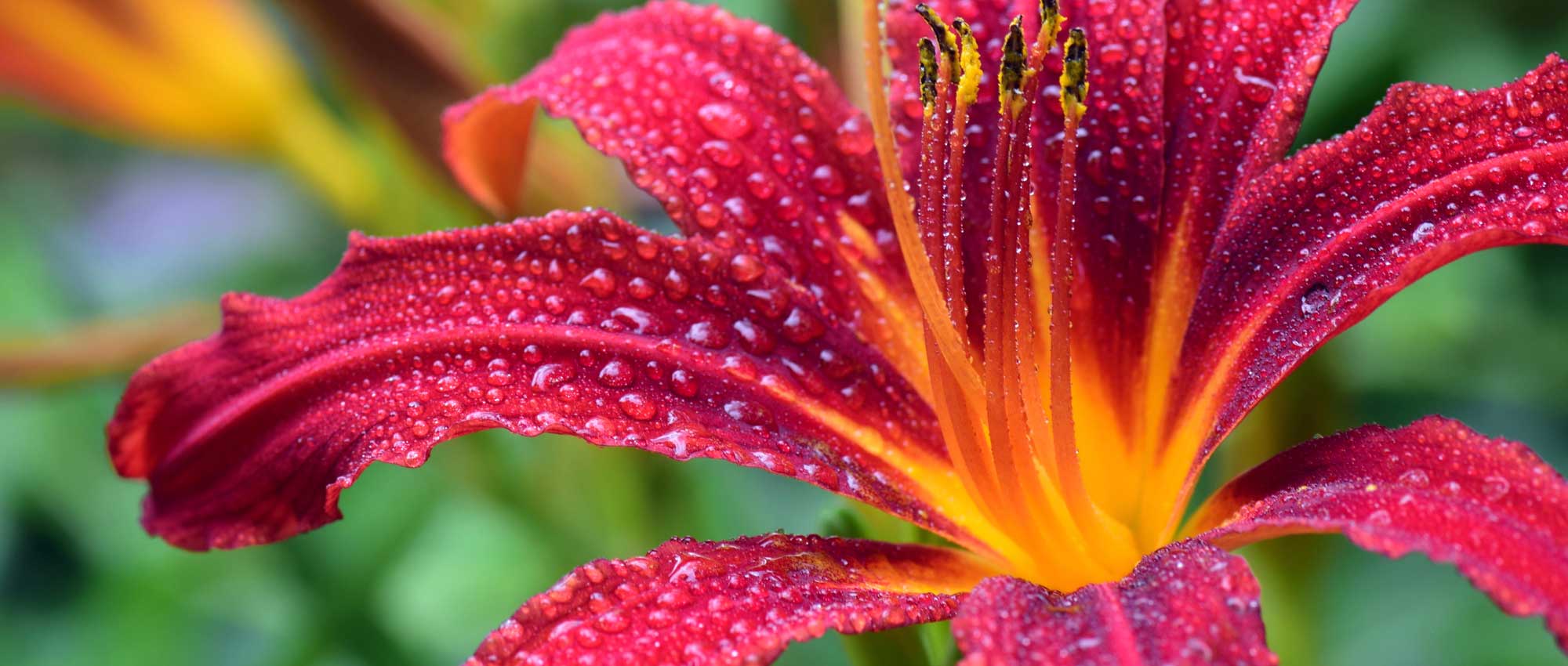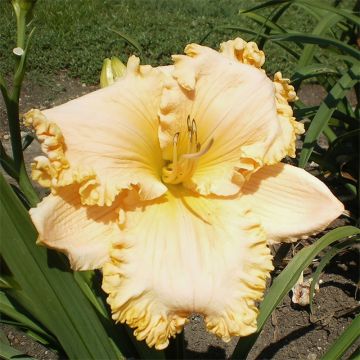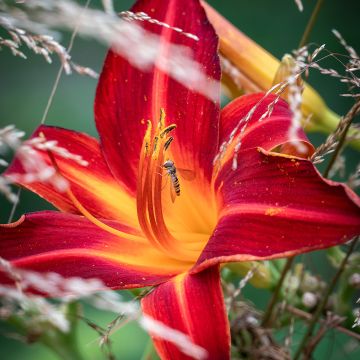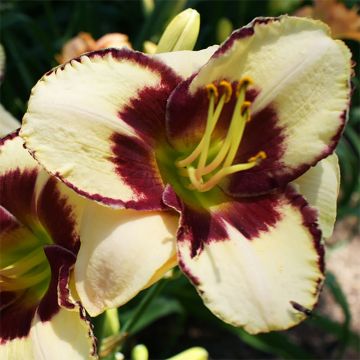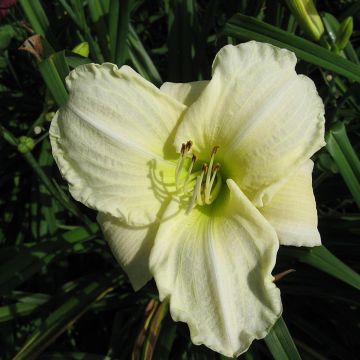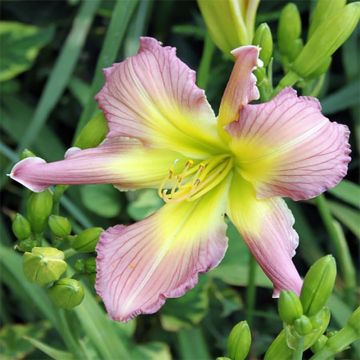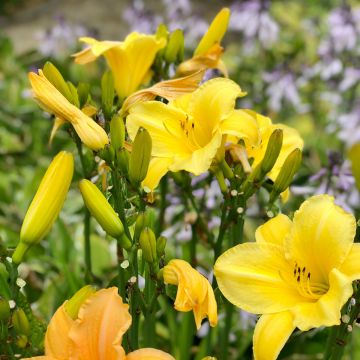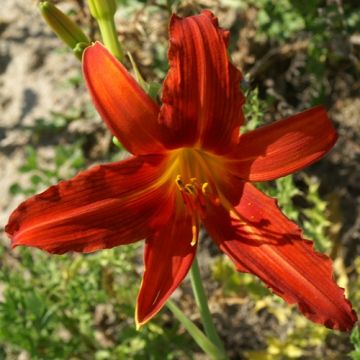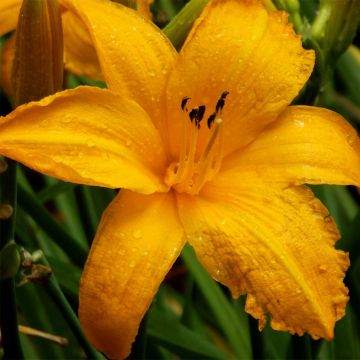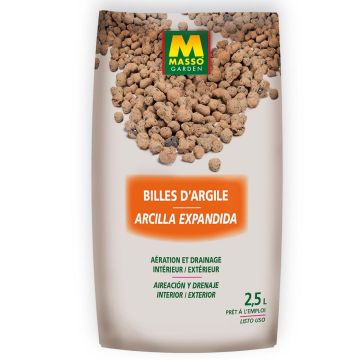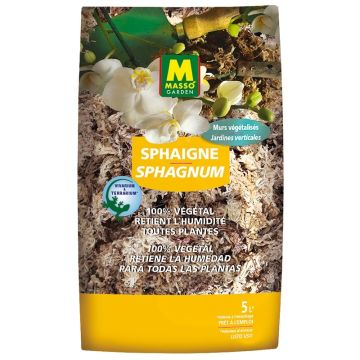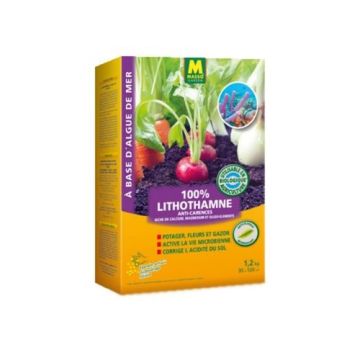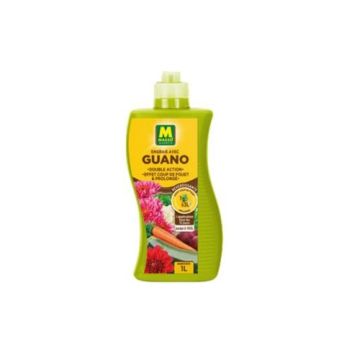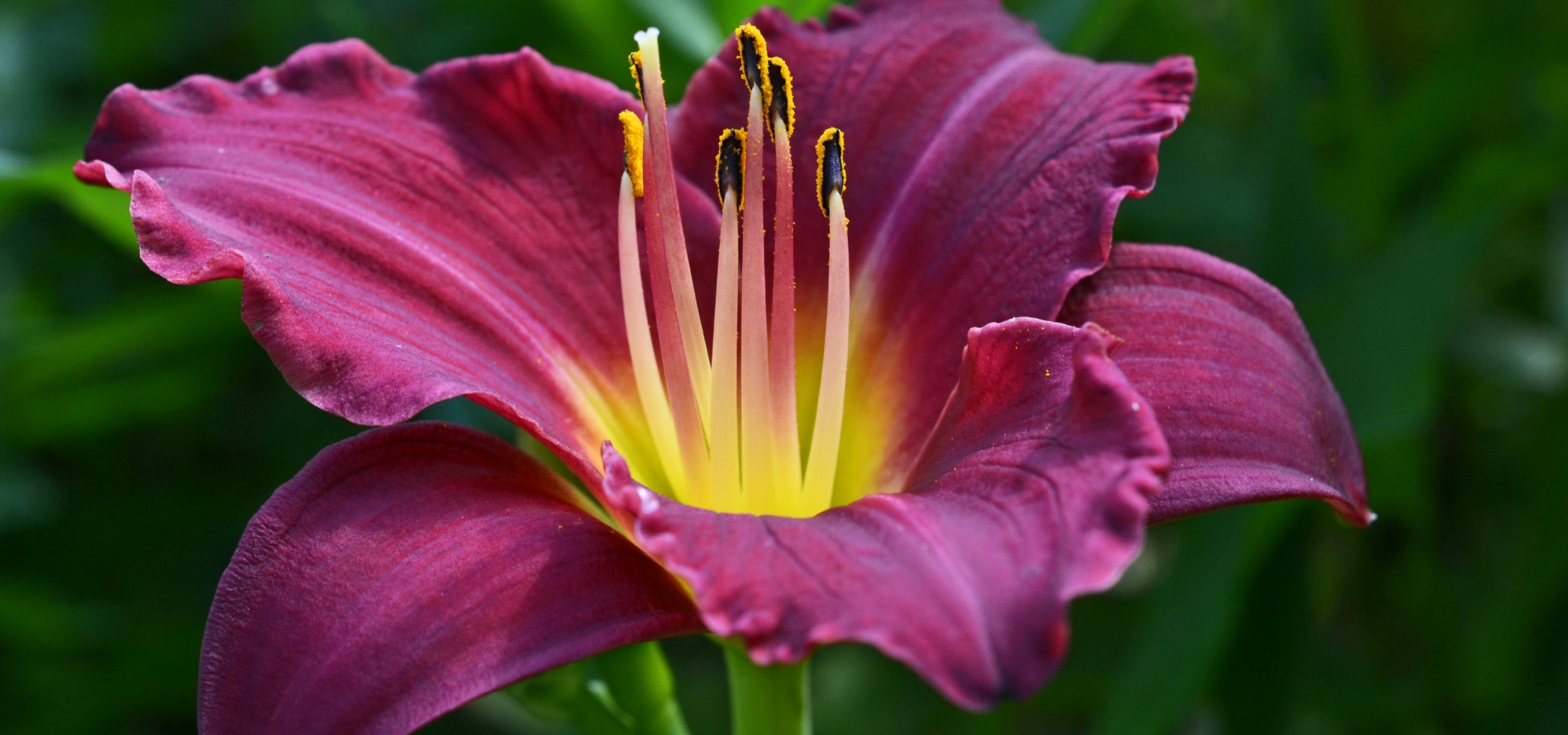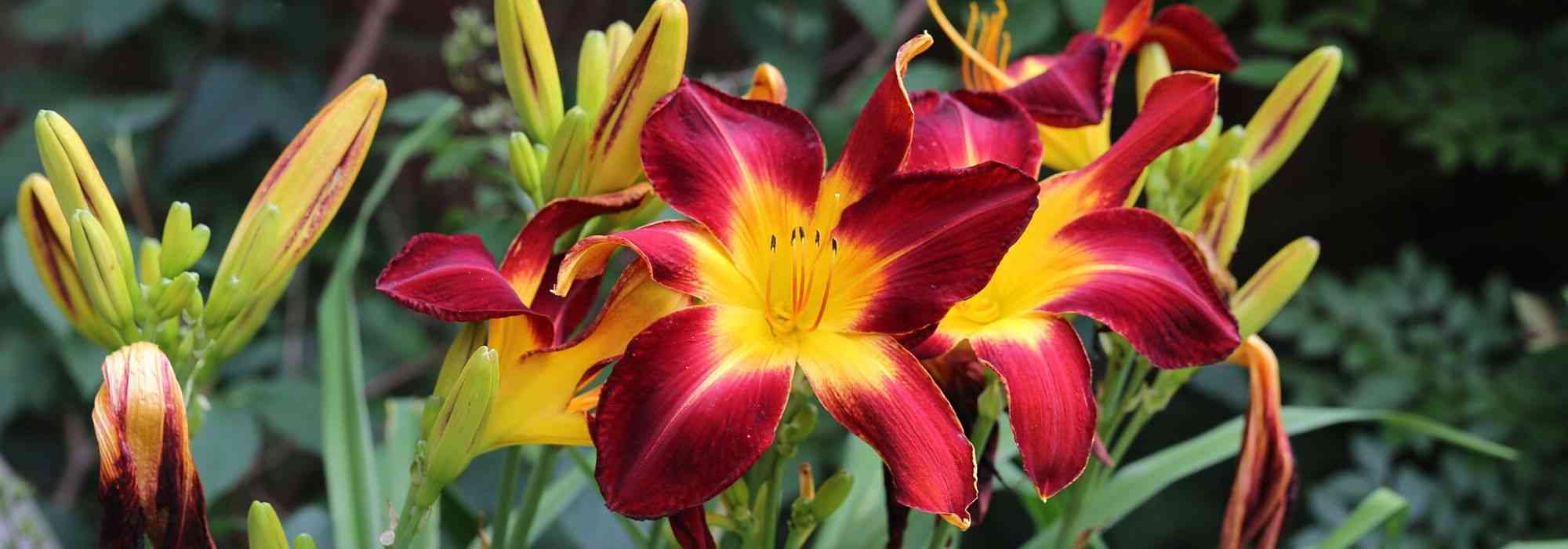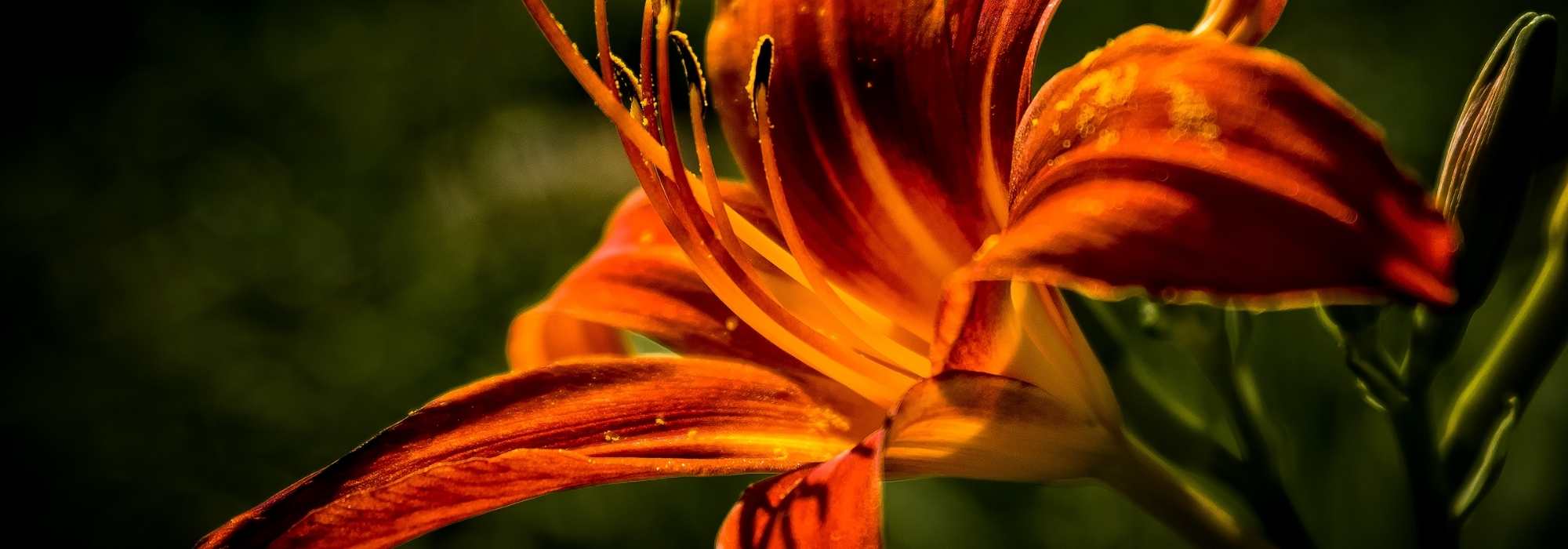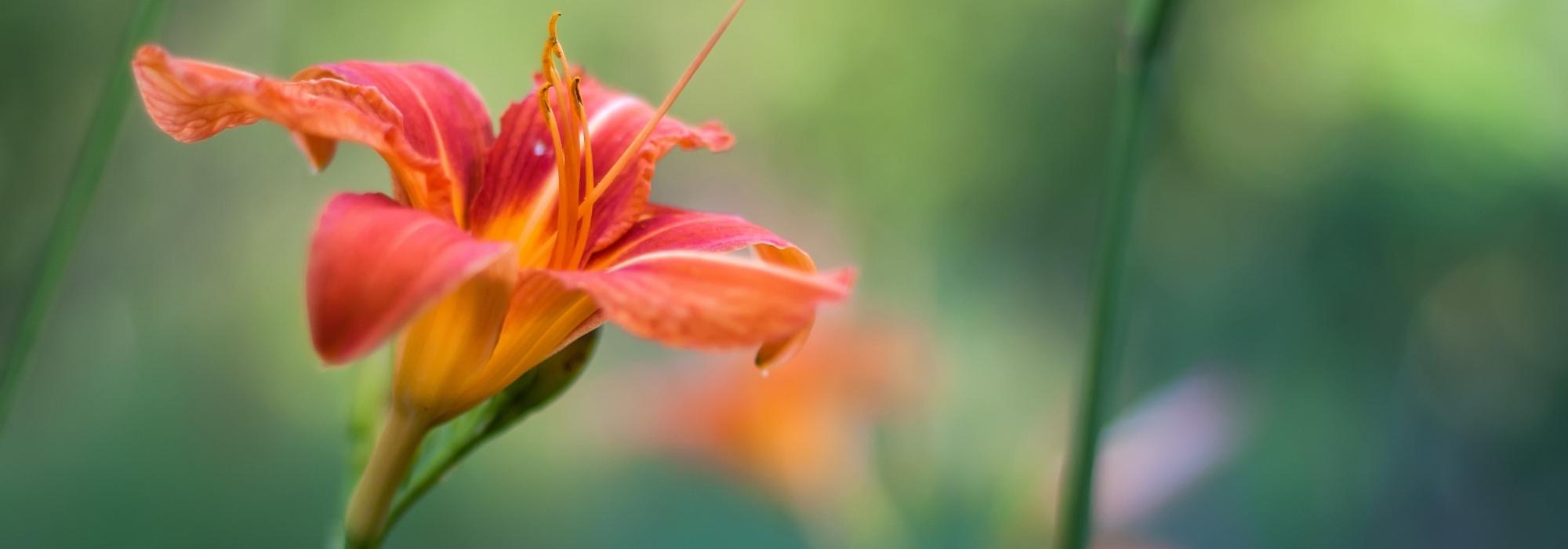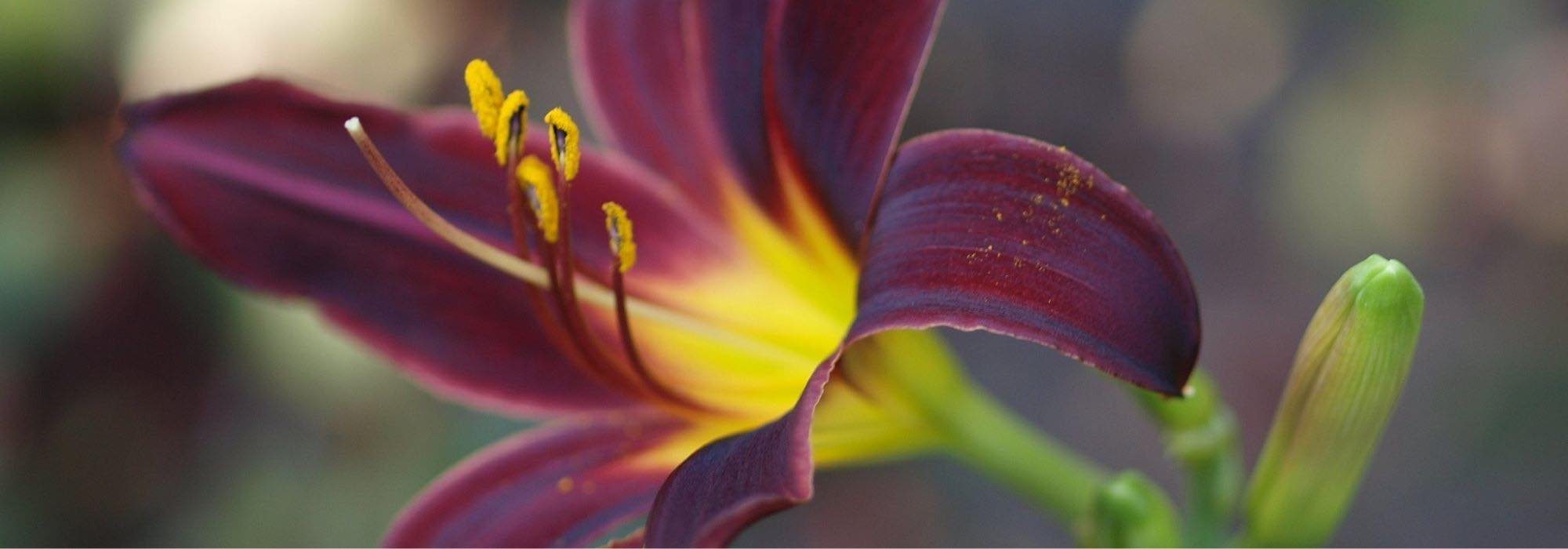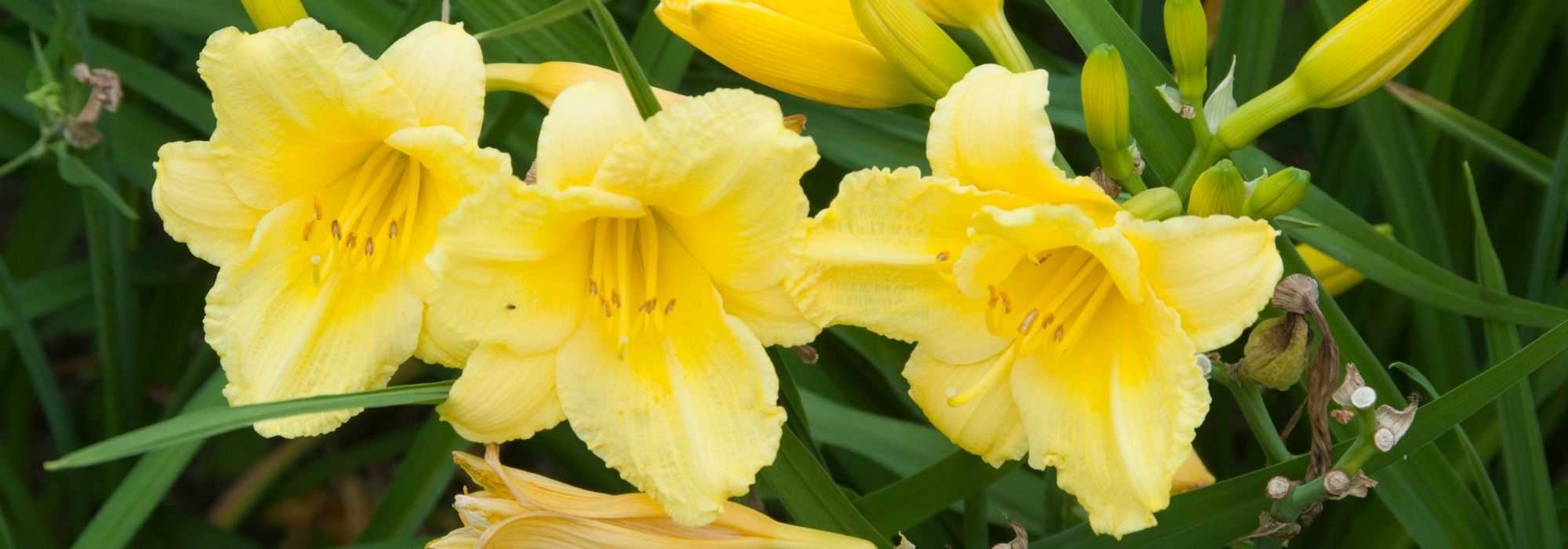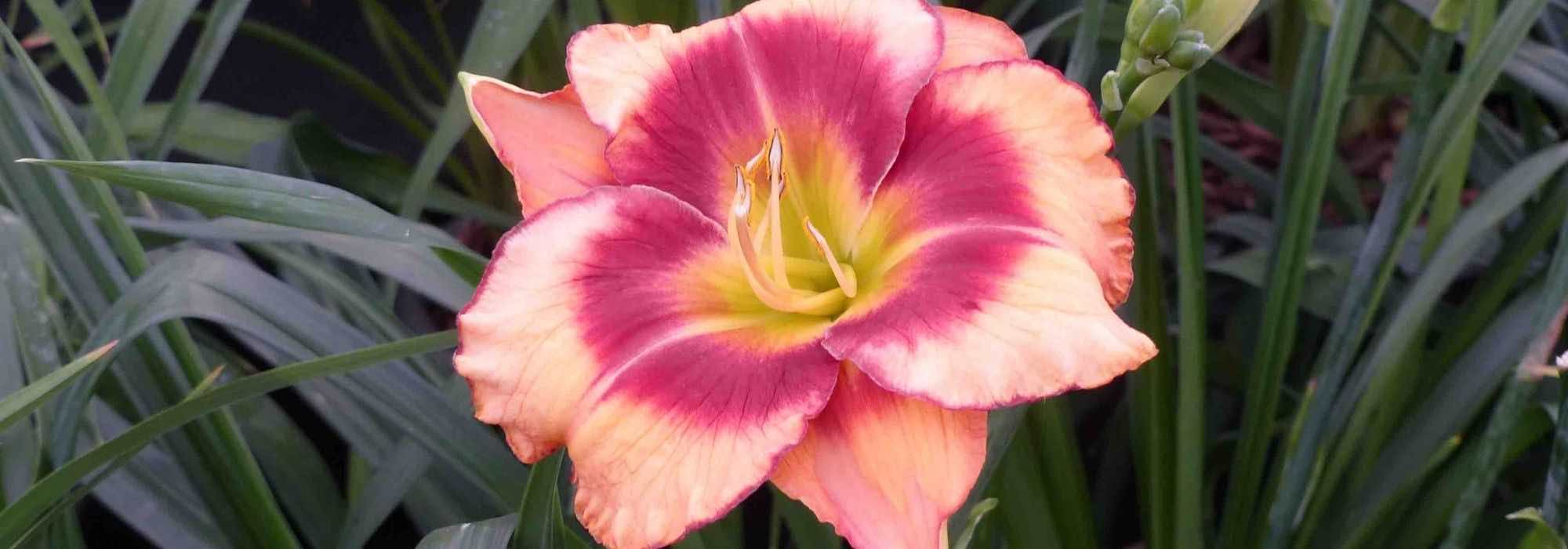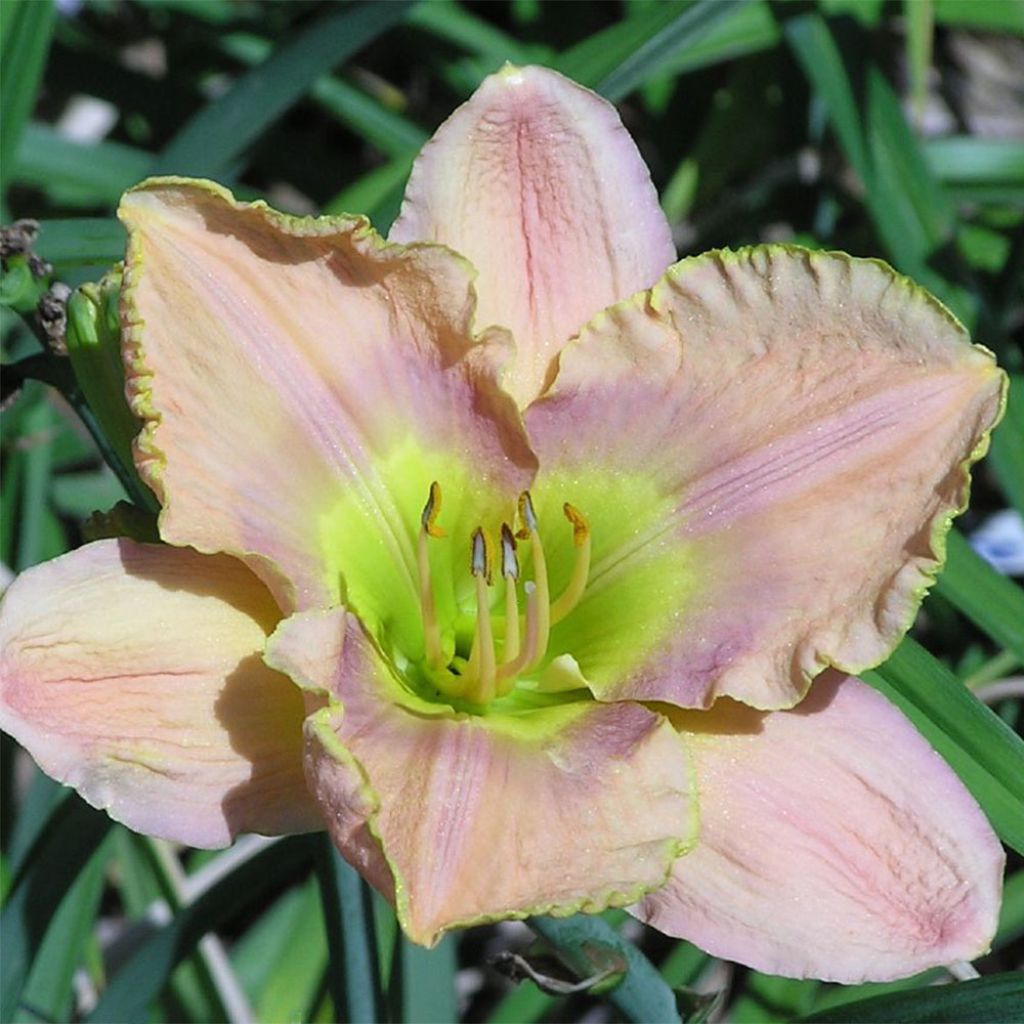

Hemerocallis Graceland - Daylily
Hemerocallis Graceland - Daylily
Hemerocallis Graceland
Daylily
Special offer!
Receive a €20 voucher for any order over €90 (excluding delivery costs, credit notes, and plastic-free options)!
1- Add your favorite plants to your cart.
2- Once you have reached €90, confirm your order (you can even choose the delivery date!).
3- As soon as your order is shipped, you will receive an email containing your voucher code, valid for 3 months (90 days).
Your voucher is unique and can only be used once, for any order with a minimum value of €20, excluding delivery costs.
Can be combined with other current offers, non-divisible and non-refundable.
Why not try an alternative variety in stock?
View all →This plant carries a 12 months recovery warranty
More information
We guarantee the quality of our plants for a full growing cycle, and will replace at our expense any plant that fails to recover under normal climatic and planting conditions.
Would this plant suit my garden?
Set up your Plantfit profile →
Description
The Daylily or Hemerocallis 'Graceland' is a medium-sized variety but truly graceful in more ways than one; it bears beautifully scented flowers with rounded shapes in a beige hue infused with lavender pink, and marked in the centre with a darker purple-pink halo. The throat of the flower displays a chartreuse green to a yellow hue, complementing this pastel colour palette. It blooms early in the season, and if the soil it is planted in remains moist, it will re-bloom in late summer.
The genus Hemerocallis belongs to the Liliaceae family. They are perennial and hardy plants with deciduous, sometimes semi-evergreen foliage. The 'Graceland' variety, tetraploid, was bred in 1987. This perennial grows in a vigorous and dense clump that reaches a height of 60 to 70 cm (24 to 28in), with a relative spread of 50 cm (20in). Hemerocallis plants spread a bit when they like the soil they are planted in. The flowers appear in June-July and again in late summer and are large, round, and strongly scented. They measure about 14 cm (6in) in diameter, and the petals in this variety are thick, wide, and slightly wavy. Each flower lasts no more than a day, but the flowering period continues continuously between June and July. The foliage, usually evergreen in this variety, is linear, abundant, and evergreen to semi-evergreen when the winter is very cold. Hemerocallis plants have short rhizomes and fleshy roots that tolerate dry soils but are more lush and floriferous in moist soil.
Very easy to grow, these plants thrive in shade and sun. Some can be invasive, so don't hesitate to divide the clumps every four or five years, preferably in autumn, after flowering. Hemerocallis is often called "the perfect perennial plant" because of its vibrant colours and its ability to tolerate any type of environment, but also due to its lack of modesty, as it exudes a beautiful exuberance that goes well with other perennials. Plant them in generous clumps in the background of your flower beds. All summer bulb flowers (Lilies, Crocosmia, Agapanthus) can be planted alongside Hemerocallis. 'Graceland' is a modest-sized variety that is easy to integrate into a perennial flower bed, such as with asters, bellflowers, peonies, goldenrods, and bugbanes. Large pots of at least 30 cm (12in) deep on a balcony or patio should be used, and dwarf varieties should be chosen. The flowers are edible: they can brighten up salads and decorate desserts.
Hemerocallis Graceland - Daylily in pictures
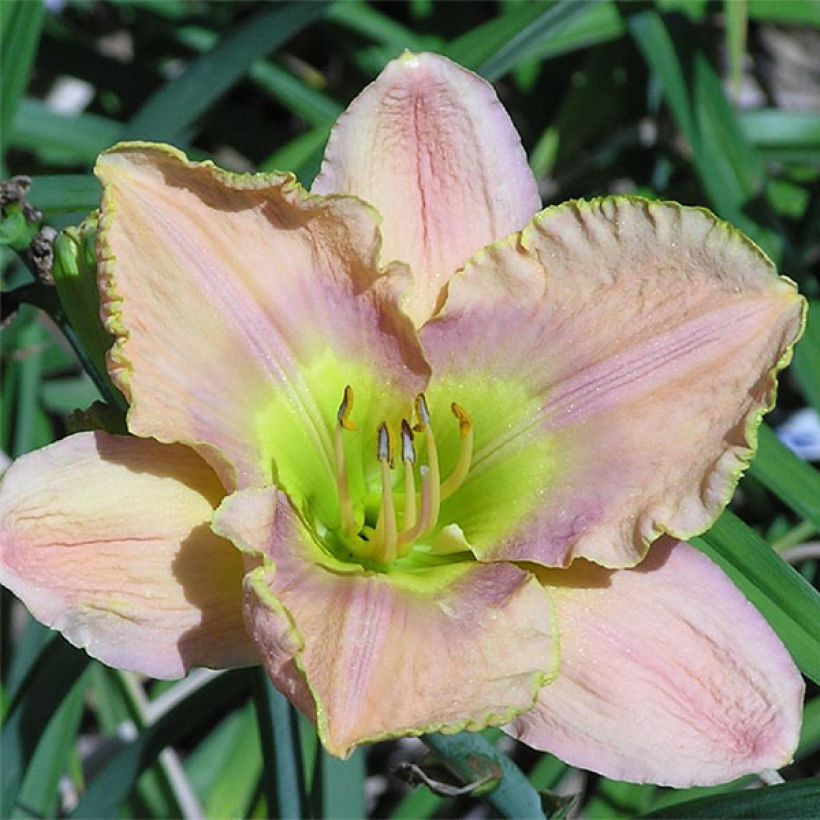

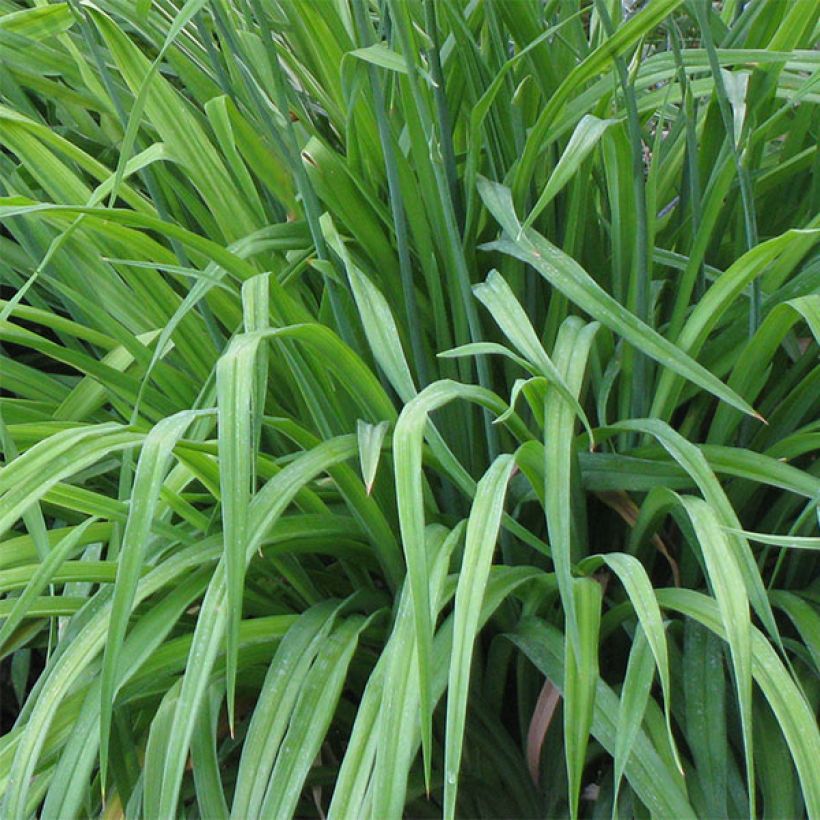

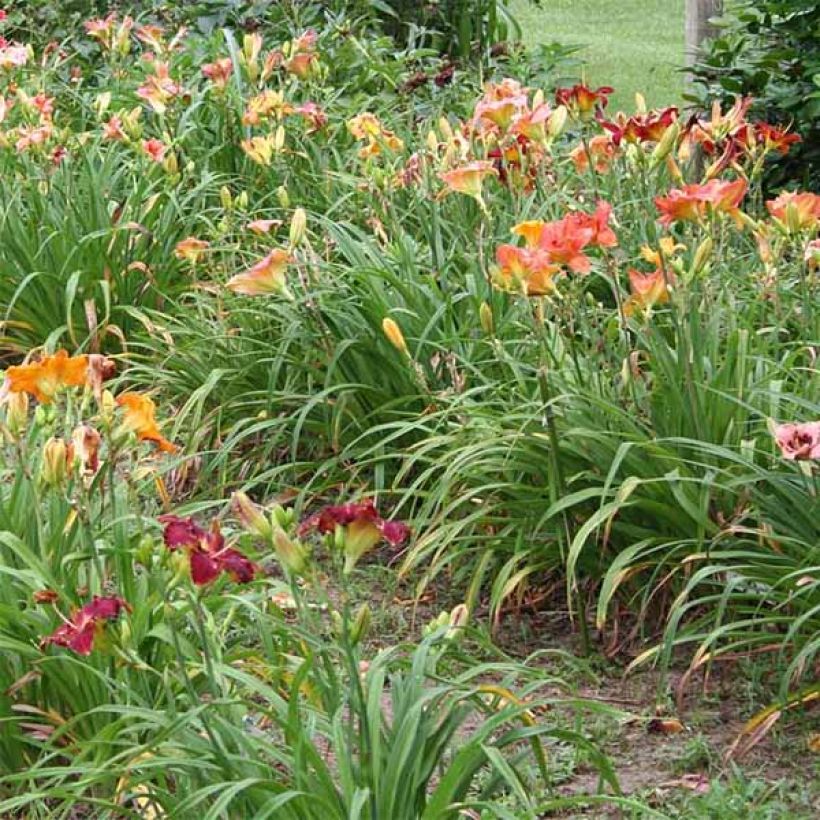

Flowering
Foliage
Plant habit
Botanical data
Hemerocallis
Graceland
Hemerocallidaceae
Daylily
Cultivar or hybrid
Other Hemerocallis - Daylilies
View all →Planting and care
These perennial plants are essential for heavy soil. They can grow in almost any type of soil, but they thrive in cool and rich soil, including clayey soil. These plants are perfectly hardy, never sick, and bloom faithfully regardless of whether they are frequently divided or not. The plants come in various sizes, which makes them interesting. We love these plants and have over 1000 varieties in our garden, constituting one of the most significant collections in Europe. The hybrids are numerous, and the Americans also love them a lot, as they create new varieties every year. Some have evergreen foliage, while others, known as "tetraploids," have large round flowers in various shades. However, they lack one thing, the blue colour!
Planting period
Intended location
Care
Planting & care advice
This item has not been reviewed yet - be the first to leave a review about it.
Haven't found what you were looking for?
Hardiness is the lowest winter temperature a plant can endure without suffering serious damage or even dying. However, hardiness is affected by location (a sheltered area, such as a patio), protection (winter cover) and soil type (hardiness is improved by well-drained soil).

Photo Sharing Terms & Conditions
In order to encourage gardeners to interact and share their experiences, Promesse de fleurs offers various media enabling content to be uploaded onto its Site - in particular via the ‘Photo sharing’ module.
The User agrees to refrain from:
- Posting any content that is illegal, prejudicial, insulting, racist, inciteful to hatred, revisionist, contrary to public decency, that infringes on privacy or on the privacy rights of third parties, in particular the publicity rights of persons and goods, intellectual property rights, or the right to privacy.
- Submitting content on behalf of a third party;
- Impersonate the identity of a third party and/or publish any personal information about a third party;
In general, the User undertakes to refrain from any unethical behaviour.
All Content (in particular text, comments, files, images, photos, videos, creative works, etc.), which may be subject to property or intellectual property rights, image or other private rights, shall remain the property of the User, subject to the limited rights granted by the terms of the licence granted by Promesse de fleurs as stated below. Users are at liberty to publish or not to publish such Content on the Site, notably via the ‘Photo Sharing’ facility, and accept that this Content shall be made public and freely accessible, notably on the Internet.
Users further acknowledge, undertake to have ,and guarantee that they hold all necessary rights and permissions to publish such material on the Site, in particular with regard to the legislation in force pertaining to any privacy, property, intellectual property, image, or contractual rights, or rights of any other nature. By publishing such Content on the Site, Users acknowledge accepting full liability as publishers of the Content within the meaning of the law, and grant Promesse de fleurs, free of charge, an inclusive, worldwide licence for the said Content for the entire duration of its publication, including all reproduction, representation, up/downloading, displaying, performing, transmission, and storage rights.
Users also grant permission for their name to be linked to the Content and accept that this link may not always be made available.
By engaging in posting material, Users consent to their Content becoming automatically accessible on the Internet, in particular on other sites and/or blogs and/or web pages of the Promesse de fleurs site, including in particular social pages and the Promesse de fleurs catalogue.
Users may secure the removal of entrusted content free of charge by issuing a simple request via our contact form.
The flowering period indicated on our website applies to countries and regions located in USDA zone 8 (France, the United Kingdom, Ireland, the Netherlands, etc.)
It will vary according to where you live:
- In zones 9 to 10 (Italy, Spain, Greece, etc.), flowering will occur about 2 to 4 weeks earlier.
- In zones 6 to 7 (Germany, Poland, Slovenia, and lower mountainous regions), flowering will be delayed by 2 to 3 weeks.
- In zone 5 (Central Europe, Scandinavia), blooming will be delayed by 3 to 5 weeks.
In temperate climates, pruning of spring-flowering shrubs (forsythia, spireas, etc.) should be done just after flowering.
Pruning of summer-flowering shrubs (Indian Lilac, Perovskia, etc.) can be done in winter or spring.
In cold regions as well as with frost-sensitive plants, avoid pruning too early when severe frosts may still occur.
The planting period indicated on our website applies to countries and regions located in USDA zone 8 (France, United Kingdom, Ireland, Netherlands).
It will vary according to where you live:
- In Mediterranean zones (Marseille, Madrid, Milan, etc.), autumn and winter are the best planting periods.
- In continental zones (Strasbourg, Munich, Vienna, etc.), delay planting by 2 to 3 weeks in spring and bring it forward by 2 to 4 weeks in autumn.
- In mountainous regions (the Alps, Pyrenees, Carpathians, etc.), it is best to plant in late spring (May-June) or late summer (August-September).
The harvesting period indicated on our website applies to countries and regions in USDA zone 8 (France, England, Ireland, the Netherlands).
In colder areas (Scandinavia, Poland, Austria...) fruit and vegetable harvests are likely to be delayed by 3-4 weeks.
In warmer areas (Italy, Spain, Greece, etc.), harvesting will probably take place earlier, depending on weather conditions.
The sowing periods indicated on our website apply to countries and regions within USDA Zone 8 (France, UK, Ireland, Netherlands).
In colder areas (Scandinavia, Poland, Austria...), delay any outdoor sowing by 3-4 weeks, or sow under glass.
In warmer climes (Italy, Spain, Greece, etc.), bring outdoor sowing forward by a few weeks.































